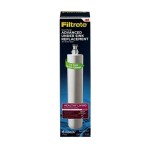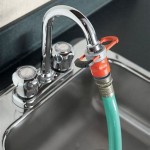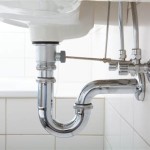How to Seal a Kitchen Sink to Granite: A Comprehensive Guide
Sealing a kitchen sink to a granite countertop is a critical step in ensuring a watertight and long-lasting installation. A properly sealed sink prevents water damage, inhibits mold and mildew growth, and preserves the integrity of the granite. The process requires careful preparation, the use of appropriate materials, and meticulous application to achieve optimal results. This article provides a comprehensive guide on how to seal a kitchen sink to granite, covering essential aspects from preparation to post-installation care.
Key Point 1: Essential Materials and Tools
The success of sealing a kitchen sink to granite heavily relies on having the right materials and tools readily available. Substituting with unsuitable items can lead to a compromised seal and potential future problems. Therefore, meticulous preparation of the necessary resources is paramount.
1. Silicone Caulk (100% Silicone): The core material for sealing is 100% silicone caulk. It is crucial to select a caulk specifically designed for kitchen and bath applications. These caulks contain additives that resist mold and mildew growth, which are common in moist environments like kitchens. Avoid acrylic latex caulks, as they are less flexible and prone to cracking over time, leading to leaks. Silicone caulk comes in various colors; choose a color that complements the granite and sink for a seamless appearance. Clear silicone is a versatile option that works well with most color schemes.
2. Caulk Gun: A caulk gun is necessary for the precise and controlled application of silicone caulk. A smooth-operating caulk gun allows for a consistent bead of caulk, preventing uneven application and potential gaps. Consider a ratcheting caulk gun for smoother operation and reduced hand fatigue.
3. Mineral Spirits or Isopropyl Alcohol: Cleaning the surfaces before applying the caulk is essential for proper adhesion. Mineral spirits or isopropyl alcohol effectively removes grease, dirt, and other contaminants that can hinder the bond between the silicone and the granite/sink. Ensure adequate ventilation when using these solvents.
4. Clean Rags or Paper Towels: These are required for cleaning the surfaces and wiping away excess caulk. Opt for lint-free rags or paper towels to avoid leaving fibers behind, which can interfere with the sealant.
5. Painter's Tape: Painter's tape is used to create clean, defined lines along the edges of the sink and granite. Applying tape before caulking helps to prevent caulk from smearing onto unwanted areas and ensures a professional-looking finish.
6. Utility Knife or Razor Blade: A sharp utility knife or razor blade is needed to cut the tip of the caulk tube at the appropriate angle and to score the old caulk if removing a previous seal. A retractable utility knife with replaceable blades ensures a sharp and safe cutting edge.
7. Caulk Smoothing Tool or Finger: A caulk smoothing tool or a gloved finger can be used to smooth the bead of caulk for a professional finish. A smoothing tool helps to create a consistent and even seal. If using a finger, wear a glove to protect your skin and prevent the caulk from sticking.
8. Safety Gloves: Wearing safety gloves protects your hands from the chemicals in the caulk and cleaning solvents. Latex or nitrile gloves are suitable options.
9. Safety Glasses: Safety glasses protect your eyes from splashes of cleaning solvents or caulk. Especially crucial when working in confined spaces under the sink.
Key Point 2: Preparing the Surfaces for Sealing
The preparation stage is arguably the most vital aspect of sealing a kitchen sink to granite. A clean, dry, and properly prepared surface ensures optimal adhesion and a long-lasting seal. Skimping on preparation can lead to premature failure of the sealant and subsequent water damage.
1. Remove the Old Caulk (If Applicable): If there is existing caulk, it must be completely removed before applying new caulk. Use a utility knife or razor blade to carefully score along the edges of the old caulk where it meets the sink and granite. Then, use a caulk removal tool or a putty knife to gently pry the old caulk away. Ensure all remnants of the old caulk are removed, as even small pieces can prevent the new caulk from adhering properly.
2. Clean the Sink and Granite Surfaces: Thoroughly clean the surfaces that will be in contact with the caulk. Use mineral spirits or isopropyl alcohol and clean rags or paper towels to remove any grease, dirt, soap scum, or other contaminants. Pay particular attention to the joint where the sink meets the granite. Multiple passes with the cleaning solvent may be necessary to ensure a completely clean surface. Allow the cleaned surfaces to dry completely before proceeding.
3. Ensure the Surfaces are Dry: Moisture is a significant enemy of silicone caulk. Ensure both the sink and granite surfaces are completely dry before applying the sealant. Use a clean, dry cloth to wipe down the surfaces and allow them to air dry for at least 30 minutes. A hair dryer on a low setting can be used to expedite the drying process, but be careful not to overheat the granite, which could potentially damage it.
4. Apply Painter's Tape: Apply painter's tape along the edges of the sink and granite, creating a clean border for the caulk. The tape should be positioned approximately 1/8 inch to 1/4 inch away from the joint, depending on the desired width of the caulk bead. Ensure the tape is applied smoothly and firmly to prevent caulk from seeping underneath. The tape will act as a guide for a straight and even caulk line, resulting in a professional-looking finish. Overlap the tape slightly at the corners for a seamless seal.
Key Point 3: Applying and Finishing the Silicone Caulk
Applying the silicone caulk requires a steady hand and a methodical approach. The goal is to create a consistent, even bead of caulk that fills the gap between the sink and the granite, providing a watertight seal. Proper finishing techniques are also crucial for achieving a smooth and professional-looking result.
1. Prepare the Caulk Gun: Load the tube of silicone caulk into the caulk gun. Use a utility knife to cut the tip of the caulk tube at a 45-degree angle. The size of the opening should be appropriate for the desired width of the caulk bead. Puncture the inner seal of the caulk tube with a long nail or wire to allow the caulk to flow freely.
2. Apply the Caulk: Apply a continuous bead of silicone caulk along the joint between the sink and the granite. Maintain a consistent pressure on the caulk gun trigger to ensure a uniform flow of caulk. Move the caulk gun slowly and steadily along the joint, overlapping the bead slightly for complete coverage. Avoid starting and stopping unnecessarily, as this can create unevenness in the seal.
3. Smooth the Caulk: Immediately after applying the caulk, smooth the bead with a caulk smoothing tool or a gloved finger. Apply gentle pressure and move the tool or finger along the bead in a smooth, continuous motion. This will force the caulk into the joint and create a smooth, concave finish. Wipe off any excess caulk from the smoothing tool or finger with a clean rag or paper towel.
4. Remove the Painter's Tape: Carefully remove the painter's tape while the caulk is still wet. Pull the tape away at a 45-degree angle to prevent pulling the caulk away from the joint. Removing the tape while the caulk is wet ensures a clean, crisp edge. If any caulk has seeped under the tape, gently clean it away with a damp cloth or a razor blade.
5. Allow the Caulk to Cure: Allow the silicone caulk to cure completely according to the manufacturer's instructions. This typically takes 24 to 48 hours. Avoid using the sink or exposing the caulk to water during the curing process. A fully cured caulk will be flexible and durable, providing a long-lasting seal.
6. Inspect the Seal: After the caulk has cured, inspect the seal for any gaps or imperfections. If any gaps are found, apply a small amount of additional caulk to fill them in. Allow the additional caulk to cure completely before using the sink. A thorough inspection ensures that the seal is watertight and will protect the granite and surrounding surfaces from water damage.
By following these steps carefully, you can effectively seal a kitchen sink to granite, ensuring a watertight and long-lasting installation. Proper preparation, the use of appropriate materials, and meticulous application are key to achieving optimal results. Careful attention to detail and adherence to the manufacturer's instructions will contribute to a durable and aesthetically pleasing seal.

How To Reseal An Under Mount Sink Into A Granite Countertop

How To Fix Fallen Undermount Sink Under Granite Countertop Diy 2024

How To Silicon Seal Your Granite Counter Top And Sink Youtube

How To Treat Seal Granite Marble Countertops Lesher

How To Reseal An Under Mount Sink Into A Granite Countertop

How To Treat Seal Granite Marble Countertops Lesher

Easy How To Replace The Silicone On An Undercounter Sink

How To Seal A Granite Kitchen Sink Higold Group Co Ltd

How To Seal A Granite Kitchen Sink Higold Group Co Ltd
How To Clean Seal Repair Natural Stone







